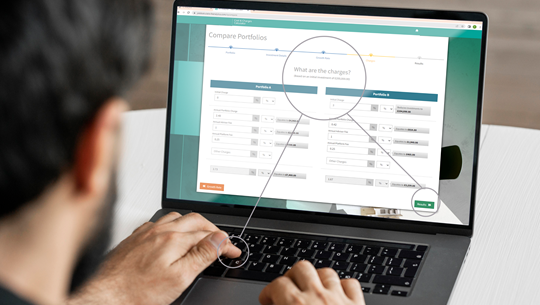With volatility continuing to affect the financial markets in the wake of the Covid-19 pandemic, leading fund data and technology company FE fundinfo has warned that up to 40% of UCITS funds will need to reissue their Key Investor Information Documents (KIIDs) imminently.
Under current regulations, a fund’s KIID needs to be updated and reissued if its Synthetic Risk and Reward Indicator (SRRI) is different from the published one for 16 consecutive weeks. At the beginning of June, analysis of FE fundinfo’s database showed that nearly 1,200 UCITS share classes had demonstrated at least 10 successive weeks of change, with more than 700 of these set to approach the 16-week deadline within three weeks.
Mikkel Bates, Head of Regulations at FE fundinfo, said:
“Since the introduction of UCITS KIIDs eight years ago, the Covid-19 pandemic is presenting the first real test where the markets are experiencing sustained periods of volatility and this is causing a lot of regulatory and compliance issues amongst fund groups. It is also a huge test for those service providers in the KIID space who monitor the data underlying these documents to ensure they remain compliant. With so many share classes approaching the 16-week cut-off point, it will be interesting to see how these service providers respond to the challenge. As with any service which has not been effectively tested, there may be some bumps in the road ahead and some unforeseen challenges. Many providers might have to re-evaluate and adapt their offerings.”
Some of the confusion surrounding SRRI reporting for UCITS funds stems from a similar regulation for PRIIPs KIDs, the Summary Risk Indicator (SRI).
Mikkel Bates said:
“The Synthetic Risk and Reward Indicator on a UCITS KIID is a measure of volatility of the fund’s prices over the previous five years. It is presented on a KIID on a scale from 1 to 7, based on prescribed intervals. It should be calculated and monitored weekly, in the case of daily-priced funds, and if the actual SRRI differs from the published SRRI for a period of four months (16 weeks), the KIID must be updated and reissued with the new SRRI.
“The Summary Risk Indicator on a PRIIPs KID meanwhile is designed to show the relative risk of a PRIIP, using a combination of Market Risk (based on the historical price volatility) and Credit Risk (ie the risk of the issuer defaulting), where applicable. The SRI is also shown on a scale from 1 to 7, but because it is possible to lose more than the amount invested on certain PRIIPs, the intervals do not match those on a UCITS KIID SRRI. A PRIIPs KID must be updated and reissued when the published level is no longer the most common when comparing all observations over a four-month period.”
FE fundinfo’s KIIDs production facility for UCITS funds offers:
- Custom branding
- Fund data collection and processing
- Calculation and continuous monitoring of SRRIs, reflecting material changes, which takes the burden from internal teams and supports fund distribution and compliance
- Document production – growing fund ranges, share classes and multiple jurisdictions and languages – multiplier effect on document production operations
- Translations
- Hosting & archiving
- Linked dissemination service to regulators, aggregators and fund distributors, including platforms
- A ‘Bureau service’ where fund managers can completely outsource the entire KIID production process to FE fundinfo, where they sign off on final documents
- A fully browser-based solution with no software to download
- Different permission levels available for each user
- Full audit trail


